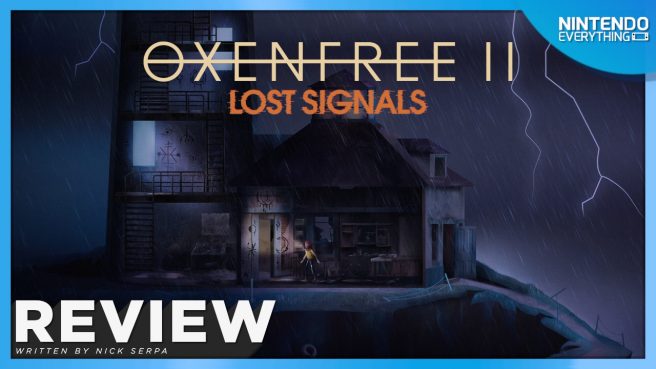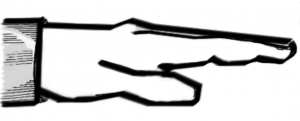[Review] Oxenfree II: Lost Signals
System: Switch
Release date: July 12, 2023
Developer: Night School Studio
Publisher: Netflix
When Oxenfree released in 2016, I was enamored with it. I was younger then and found comfort in its high school drama and socially awkward characters, who were relatable and felt real. The supernatural yarn it weaved was surprisingly dark, yet grounded in events that felt possible in its strange world of ghosts and timeloops. But players who made it the end were likely left with at least a few unresolved questions, and Oxenfree II: Lost Signals tantalizes with promises of answers, or at least a deeper glimpse into the strange phenomena that occurred on Edwards Island all those years ago. While Oxenfree II delivers in that regard, its narrative and new exploration mechanics felt disappointingly safe for most of its runtime, failing to surprise and hook me in the way its predecessor did (outside of a few key moments); still, fans of the original owe it to themselves to see this story through to its conclusion.
Oxenfree II: Lost Signals takes place well after the events of the original, and primarily focuses on Riley, a grunt working for a government-contracted environmental research group that studies strange phenomena. After dropping out of the military and failing to find direction in her life, Riley has returned to her hometown of Camena, where she links up with a coworker named Jacob to investigate a mysterious “gate” that has appeared in the sky over Edwards Island. It’s quickly revealed that a cult named Parentage is trying to reopen it (for reasons I won’t I spoil), so Riley and Jacob make their way across the island to set up machines that just might be able to prevent the situation from getting worse.
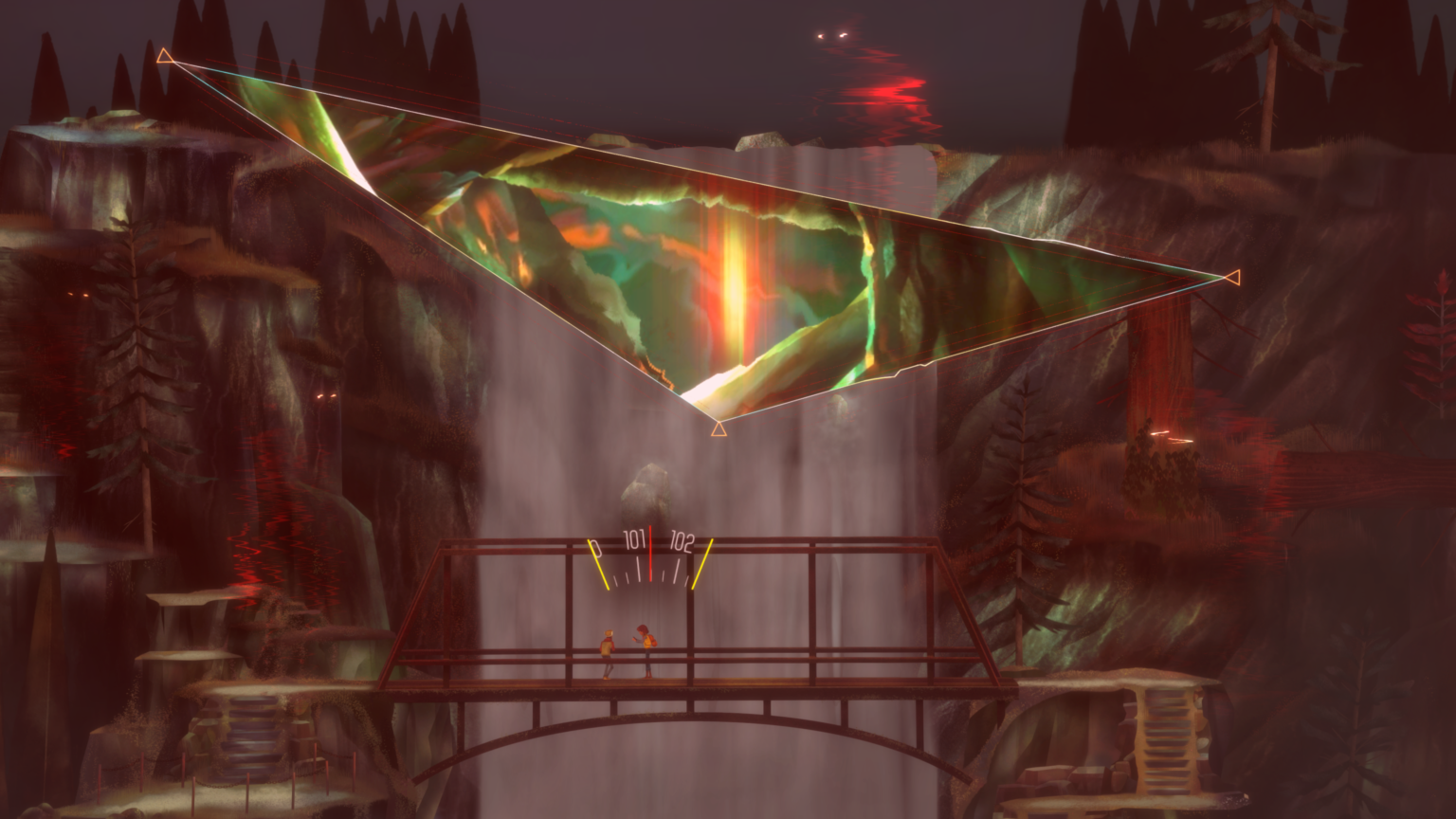
Despite the sense of urgency that the premise of the story might suggest, Oxenfree II doesn’t feel as high-stakes as its predecessor. That’s perfectly reasonable, as returning players who beat the first game will already be well aware of the nature of the supernatural threat, knowing more than the protagonists about what’s going on for a good chunk of the story. The cult is positioned as the main antagonist this time around, but they feel relatively toothless for a good chunk of the story, mostly existing in the backdrop until the player finally starts circumstantially encountering some of their members. While its those interactions that help drive the story forward, I wish they had been more of a driving force in the narrative. Their leader – Olivia – has a dark side to her personality that gave me the occasional goosebumps, but she has so little screentime in what is already a short narrative experience; fleshing out her character earlier in the game would have made a huge difference.
In fact, most of your time in Oxenfree II is spent exclusively with Riley and Jacob as they traverse Camena. It’s a good thing that they are such well-written characters, then. While perhaps not relatable to me personally, they feel grounded; Riley’s struggles with burnout, relationships and family feel particularly common in this day and age, and her jaded but honest approach to self-reflection feels well-suited to her more mature personality. She can also be quite snarky at times if you select those dialogue options, but never to the point where she’s unlikeable. Jacob, meanwhile, is earnest and optimistic in all the best ways; while lacking in self-confidence, he’s emotionally intelligent and vulnerable in way that male characters in games often aren’t, which I found really refreshing. Just like in the first game, dialogue between them feels brisk and natural in a way that – while perhaps no longer innovative in of itself – is still rare in games of this scope. I didn’t find them as compelling to listen to as the cast from the first game, but they do at least develop as individuals over the course of the story in a way that feels tangible.
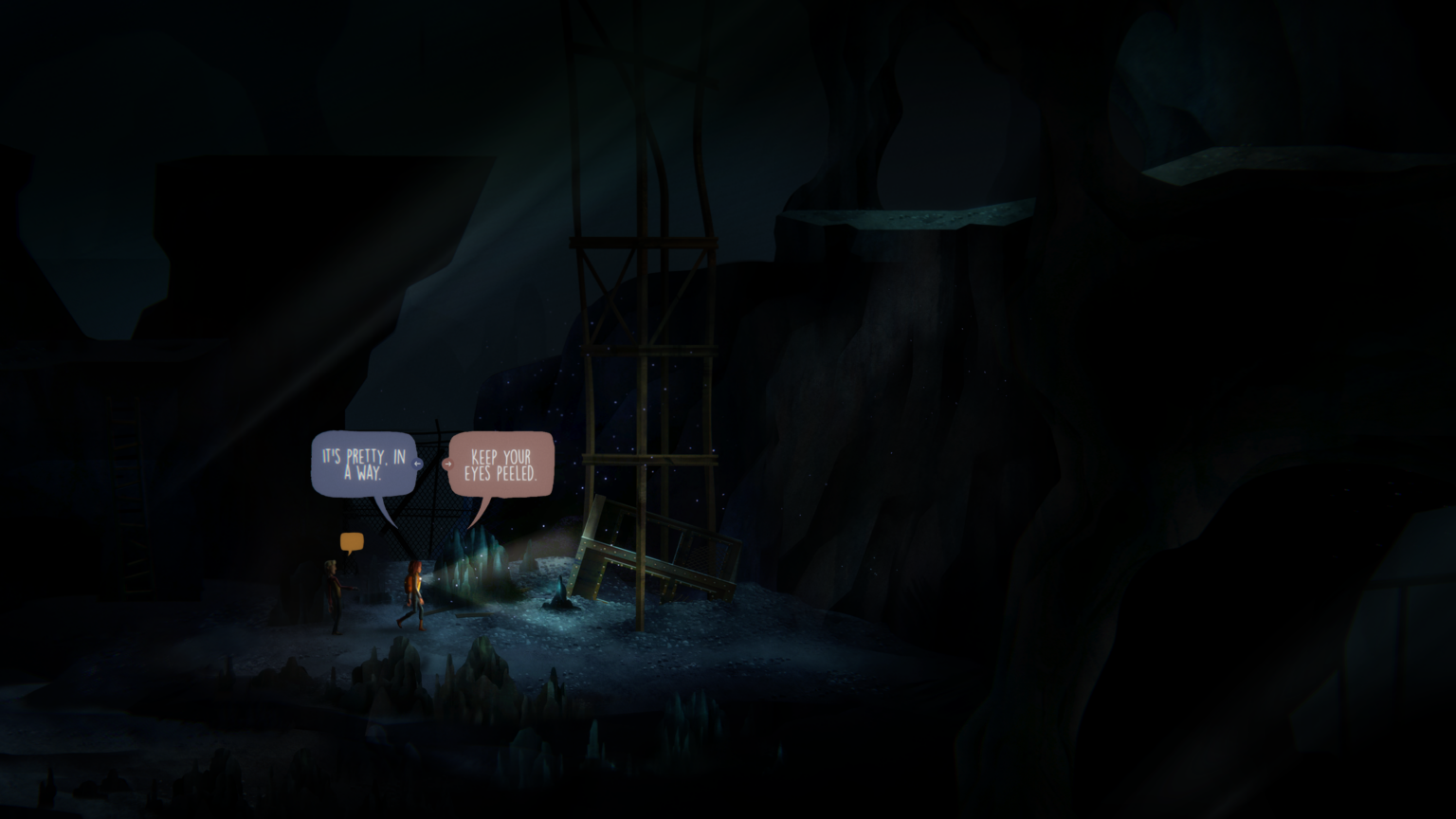
While face-to-face interactions with other characters are sparser than in the original game, a new walkie-talkie system allows Riley to remotely chat with characters on other frequencies. Many of these interactions feel completely optional – to interact with Maria, for example, who hosts a high school radio show, you have to make a point to listen to her show and call in at the right time. While choosing to help some of the characters you interact with has an impact on the game’s story, it didn’t feel particularly large to me. That’s possibly because I couldn’t view the end-of-game pie charts that show the outcomes of your decisions, which will be added in at launch; that said it’s harder to connect and care about characters who we never get to see, and whose plights feel significantly lower priority than the chaos that’s happening on Camena. Despite their simplicity, I felt like my interactions with the members of the Parentage had a far greater impact on the story than anything else, definitely factoring into how some key scenes play out.
I did run into a few instances where dialogue – and in one case, an emotional, important moment between Riley and Jacob – was cut off abruptly when switching between different areas. For the most part, conversations in Oxenfree II will resume after loading screens when walking to a new part of Camena, but the few times they didn’t I really felt like I missed important character development. The developers are aware of these sorts of timing issues, so I hope they gets patched out in time for the final release, but it’s something to be consider if you’re planning on playing at launch.
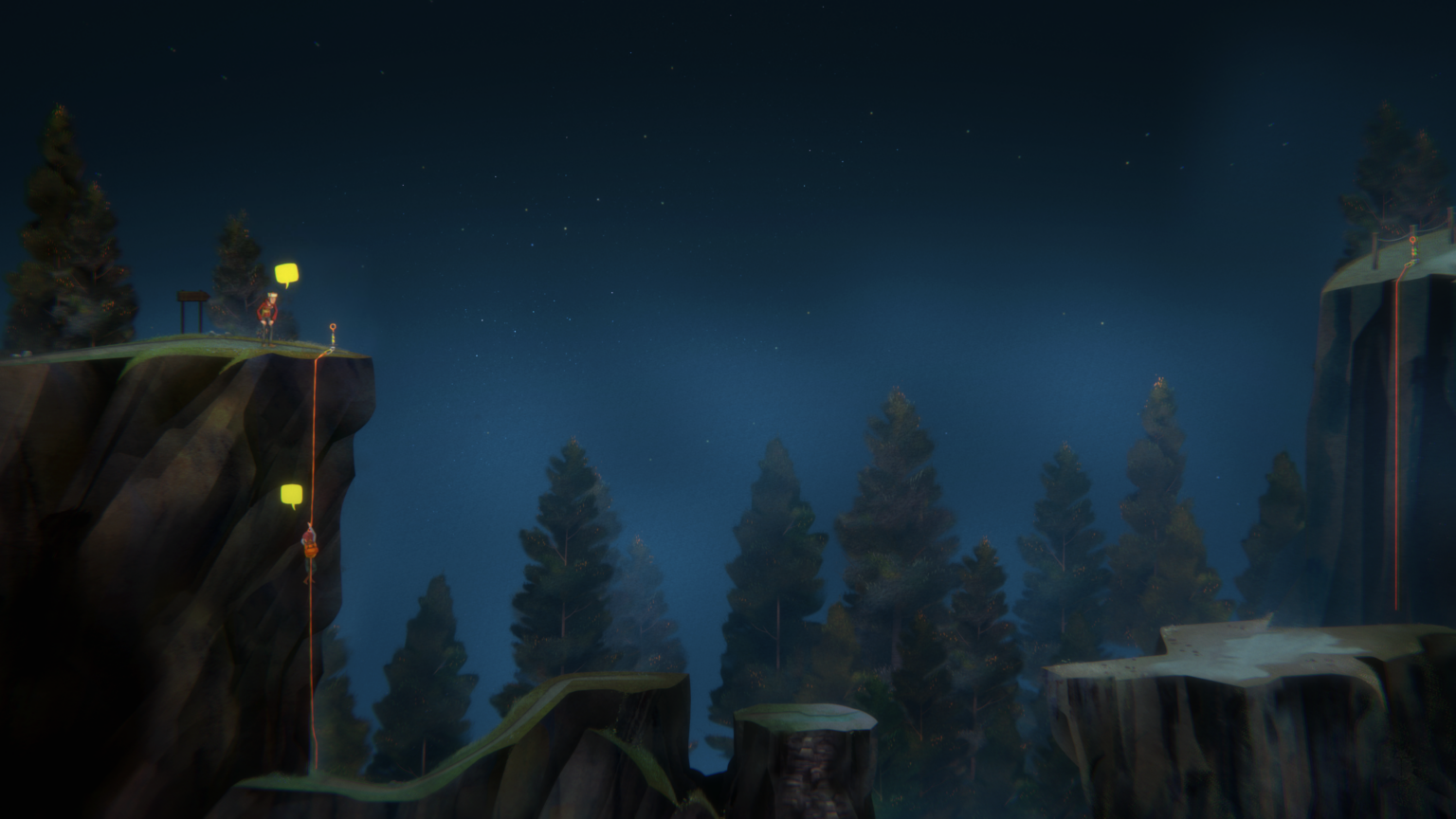
The new island of Camena is beautifully crafted, retaining the watercolor-painting aesthetic of the original but feeling more organic and lived-in. It’s very similar to the first game’s Edwards Island in its atmosphere and general geography, but has significantly more detail packed into its world, particularly its interiors. The zoomed-out camera does a great job at selling the scale of the environment, but the downside is that it often makes these details harder to appreciate, especially the detailed character animations that have clearly had a lot of work poured into them. This feeling is amplified when playing in handheld mode – while the game looks great on the Switch’s OLED screen, a lot of the texture of the world is lost on the smaller display.
While climbing has been touted as an exciting new way to get around the island, there’s not much to it other than picking a direction to go in and hitting B to jump between ledges, so it feels more like a means to an end than anything substantial. Of course, there’s more to the island of Camena than meets the eye, and as the game progresses, increasingly strange paranormal phenomena will occur that distort the world around Riley. It’s here that I’d like to offer a light spoiler warning for the next few paragraphs, because discussing how some of these scenarios play mechanically will necessitate discussing certain narrative themes, although I’ll steer clear of discussing specific plot points.

One recurring element from the first Oxenfree is that it very quickly becomes apparent that time itself is unstable around Camena. From a very early point in the game, Riley will find herself stuck in brief time loops, needing to find these strange analogue machines and solve simple puzzles on their screen to break out of the loop. Additionally, she and Jacob will occasionally encounter Time Tears while exploring that, when entered, whisk them away to a time in the past. Sometimes these moments deliver some narrative context; other times, they exist as part of a puzzle in the modern day, such as needing to get past a broken elevator to leave an environment.
In theory, this is an incredibly cool way to expand upon the lore of the world and the themes of the first game, but in practice, the Time Tears hold so little narrative and mechanical weight that they’re some of the least interesting parts of the game. It’s really a shame, as we hear so much dialogue from other characters about events that have happened in the past, and Time Tears could have been an interesting way to explore more of that. But there are so few of them, and so few meaningful interactions within them that they feel mostly extraneous. The handful that require puzzle solving are almost ridiculously straightforward, to the point that I began to question what they were really adding to the experience.

Riley will also occasionally experience flashbacks to her childhood, and flash-forwards to her future. These moments are far more frequent, and focus on providing the player an opportunity to see more of her character and the type of person she might become if she makes certain choices. At the very least, these events have more narrative weight to them, so they feel more important to the overall progression of the story, but like the Time Tears, they’re never really explained in a meaningful way, which I found unsatisfying. I can respect that sometimes a mystery can be more compelling when some of its elements are left unexplained, but there needs to at least be some broad context to help the events feel grounded. I also dislike how quickly Riley and Jacob accept all the time shifting strangeness without really questioning what is causing it or why it matters, or ever really being afraid of any of it. I know they’re adults and are more level-headed than the cast of the first game, but their general nonplussed attitude to most of the events in the game made it hard for me to believe in the gravity of it all.

Despite some missed potential, I did ultimately find the conclusion of Oxenfree II: Lost Signals satisfying as a fan of the original. There are some direct connections to the first game that I wasn’t expecting, and some stunning set pieces late in the game convincingly demonstrate the power of the supernatural forces at play behind the scenes. While the final choice in the game itself lacks the moral ambiguity and emotional impact that I think I’ve come to expect from the genre, it does at least provide some closure to some major loose ends.
The Verdict
Oxenfree II: Lost Signals is a good sequel with generally strong writing and world-building, but it gets a bit lost in its own desire to craft strange supernatural scenarios that it never fleshes out to a satisfying degree. Much of its new mechanics feel too simple or sparsely executed to be compelling, and while the new protagonists are refreshing and interesting to spend time with, the rest of the cast is either too distant or too sporadically present to allow for meaningful relationships. If you enjoyed Oxenfree, I think Lost Signals is worth playing, if only to see the conclusion of the story, but years down the road, I don’t expect my memories of playing to stick with me the way they did the first time around.
Oxenfree II: Lost Signals review copy provided by the publisher for the purposes of this review.
